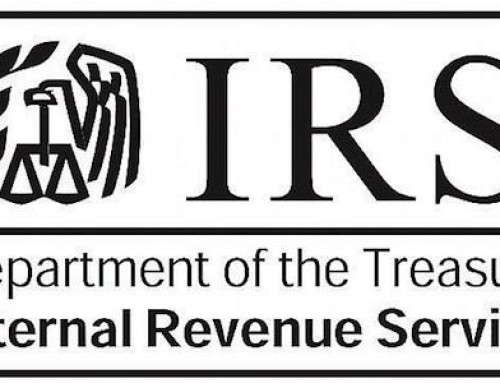Deducting and capitalizing business expenses under final regs
An important development this year will affect every business, including yours. The IRS has issued long-awaited regs on the tax treatment of amounts paid to acquire, produce, or improve tangible property. The regs explain when those payments can be deducted, which confers an immediate tax benefit, and when they must be capitalized.
These final regs retain many provisions of the temporary regs that were issued in 2011. However, the final regs refine and simplify the temporary regs and add new safe harbor provisions that will help you to nail down expense deductions.
The regs must be followed for tax years that begin after Dec. 31, 2013 – whether a calendar year or a fiscal year, such as a fiscal year beginning July 1, 2014. Taxpayers have the option of applying the final regs retroactively to the 2012 and 2013 tax years. There’s also a third option to apply the temporary regs to the 2012 and 2013 tax years.
The regs are lengthy and complex. The summary below is intended to give an overview of how they treat issues of deduction and capitalization. We would be happy to sit down with you to discuss the regs at length and see how they will affect your specific business situation.
Capitalization or deduction. The regs set forth the general rule that amounts paid to improve a unit of property must be capitalized. An improvement is defined as an expenditure that betters a unit of property, restores it, or adapts it to a new and different use.
On the other hand, the regs allow a current deduction for repairs and maintenance to property. Deductible repair and maintenance expenses are defined in a negative way – they are deductible if not otherwise required to be capitalized.
Unit of property. One key concept in the regs is the “unit of property ” (UOP) that is being improved or repaired. The smaller the UOP, the more likely it is that costs incurred in connection with it will have to be capitalized.
For example, work on an engine of a vehicle is more likely to be classified as an expense that must be capitalized if the engine is classified a separate UOP. By contrast, if the UOP is the vehicle, the engine work has a better chance of passing muster as a repair.
Property other than buildings. In general, for property other than buildings, a single UOP consists of all components that are functionally interdependent, such that one component can’t be placed in service without the other components.
Say that a business buys a battery-powered golf cart for its foreman to use in getting around a large warehouse. It buys the chassis from one vendor and the battery from another, and then assembles the two components. Here, the cart is the UOP, since the chassis can’t be placed in service without the battery.
Buildings. When it comes to buildings, the regs generally treat each building and its structural components as one UOP – the “building.” The regs also list nine specific building systems that are treated as separate from the building structure. An improvement to the building is defined by its effect on those systems, rather than on the building as a whole.
If a taxpayer restores a building structure, such as by replacing the entire roof, the expense is treated as an improvement to the single UOP consisting of the building. If the taxpayer makes an improvement to a building system, such as the heating, ventilation, and air conditioning (HVAC) system, that expense is also an improvement to the building UOP and depending on the nature of the improvement, may be eligible to be treated as an expense versus capitalized.
Deducting materials and supplies. A deduction is allowed for amounts paid to produce and acquire materials and supplies that are consumed during the year. Materials and supplies are defined to include five specific categories of property used or consumed in the business operations.
UOPs with an economic useful life of no more than 12 months qualify as materials and supplies under this rule. Likewise, certain inexpensive items qualify as materials and supplies. Under the final regs, this rule applies to UOPs that cost $200 or less to acquire or produce, an increase from the $100 threshold in the 2011 temporary regs.
De minimis safe harbor. The regs allow a taxpayer to deduct certain limited amounts paid for tangible property that are expensed for financial accounting purposes. Under the 2011 temporary regs, this de minimis safe harbor was only available to taxpayers that had an applicable financial statement (AFS), which can be a certified audited financial statement used for credit purposes, reporting to partners, or other non-tax purposes. The final regs change this by allowing businesses without an AFS to use the de minimis safe harbor.
A taxpayer with an AFS may rely on the de minimis safe harbor if no more than $5,000 per invoice, or per item as substantiated by the invoice, was paid for the property. For businesses without an AFS, the maximum figure is $500 rather than $5,000.
To use the safe harbor, the business must have a book capitalization policy in place at the beginning of the tax year that is consistent with the safe harbor amounts. Although a written capitalization policy is not required for taxpayers who do not have an AFS, we are recommending that all taxpayers have a written policy (we would be happy to provide you with a template).
Routine maintenance safe harbor. The regs include a safe harbor that allows certain expenses of routine maintenance to be deducted rather than capitalized. Routine maintenance means recurring activities that keep business property in ordinarily efficient operating condition, such as inspection, cleaning, testing, and replacement of damaged or worn parts.
Under the 2011 temporary regs, this safe harbor wasn’t available for building maintenance. The final regs expand the safe harbor to cover buildings as well.
For a building structure or system, the taxpayer must reasonably expect to perform the maintenance more than once during the 10-year period that begins when the structure or system is placed in service. For property other than buildings, the taxpayer must reasonably expect to perform the activities more than once during the property’s class life for depreciation purposes.
Per-building safe harbor for qualifying small taxpayers. The final regs add a new safe harbor that allows qualifying small taxpayers-those with average annual gross receipts of $10 million or less in the three preceding tax years-to deduct improvements made to a building property with an unadjusted basis of $1 million or less. This safe harbor applies only if the total amount paid during the tax year for repairs, maintenance, and improvements to the building doesn’t exceed the lesser of $10,000 or 2% of the building’s unadjusted basis.
This safe harbor may be elected annually on a building-by-building basis. It is elected by including a statement on the tax return for the year the costs are incurred for the building. I can help you to take advantage of this rule by filing the necessary election.
Accounting method changes. A change to conform to the regs is considered a change in accounting method, for which a tax accounting adjustment is typically required. These accounting adjustments can be extremely beneficial, as they constitute a one-time deduction that will allow many taxpayers to write off prior year items that were previously capitalized and take the entire tax benefit on their 2014 tax returns. Taxpayers must include these adjustments on their 2014 tax return in order to receive the one-time benefit. The IRS is still working on issuing practical guidance and is still finalizing the required forms, therefore we expect more tax returns to be extended this year in order to properly comply with the regulations and calculate these one-time tax benefits.
We expect that these new regulations will affect the majority of our business clients and/or taxpayers that own commercial or residential rental property. Please give us a call to discuss how these regulations and one-time tax savings opportunities will affect you or your business.





Leave A Comment